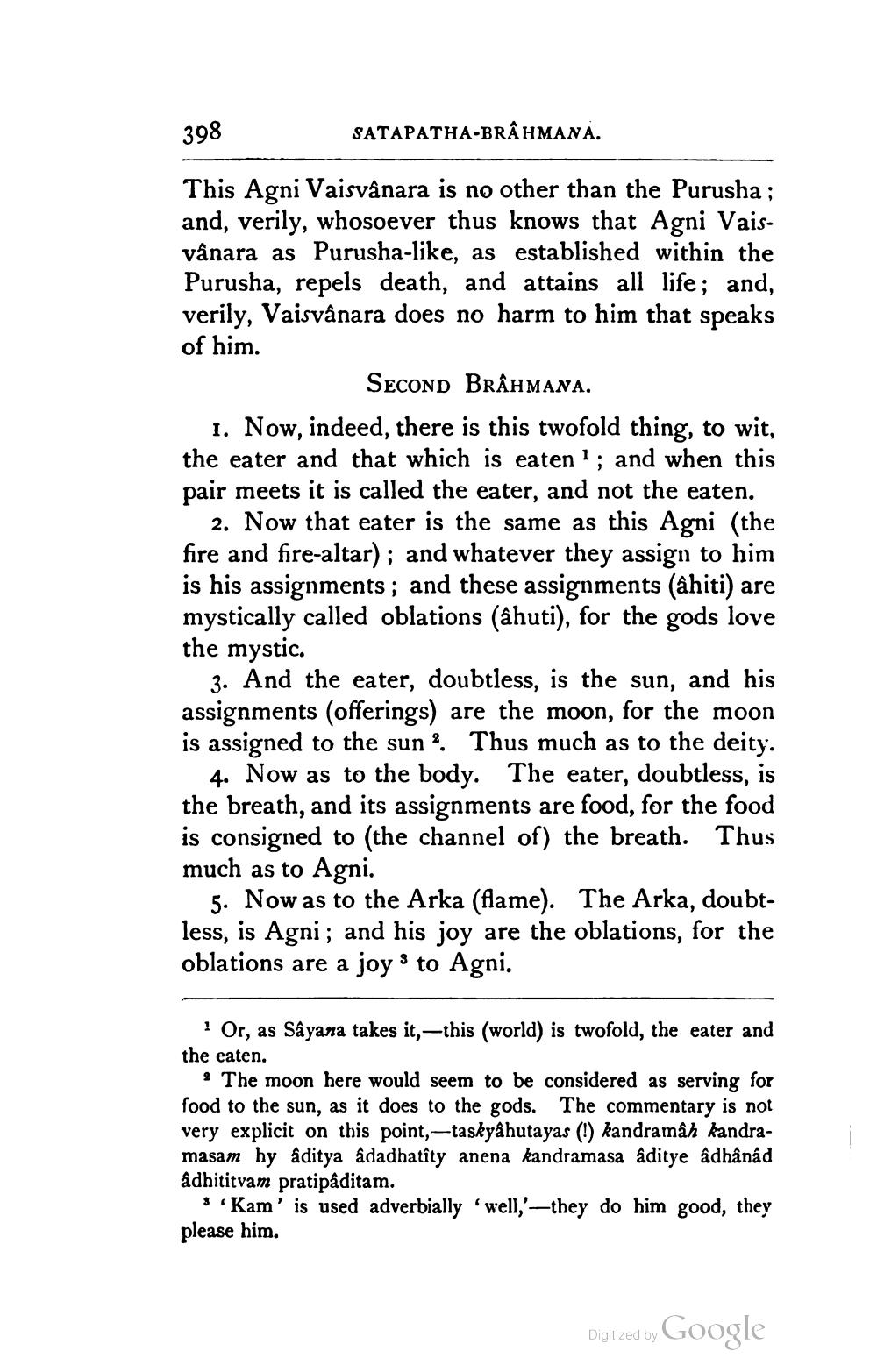________________
398
SATAPATHA-BRAHMANA.
This Agni Vaisvânara is no other than the Purusha; and, verily, whosoever thus knows that Agni Vaisvânara as Purusha-like, as established within the Purusha, repels death, and attains all life; and, verily, Vaisvânara does no harm to him that speaks of him.
SECOND BRAHMANA.
1. Now, indeed, there is this twofold thing, to wit, the eater and that which is eaten1; and when this pair meets it is called the eater, and not the eaten.
2. Now that eater is the same as this Agni (the fire and fire-altar); and whatever they assign to him is his assignments; and these assignments (âhiti) are mystically called oblations (âhuti), for the gods love the mystic.
3. And the eater, doubtless, is the sun, and his assignments (offerings) are the moon, for the moon is assigned to the sun. Thus much as to the deity. 4. Now as to the body. The eater, doubtless, is the breath, and its assignments are food, for the food is consigned to (the channel of) the breath. Thus much as to Agni.
5. Now as to the Arka (flame). The Arka, doubtless, is Agni; and his joy are the oblations, for the oblations are a joy to Agni.
3
1 Or, as Sâyana takes it,—this (world) is twofold, the eater and the eaten.
The moon here would seem to be considered as serving for food to the sun, as it does to the gods. The commentary is not very explicit on this point,-taskyâhutayas (!) kandramâh kandramasam hy âditya âdadhatîty anena kandramasa âditye âdhânâd âdhititvam pratipâditam.
Kam' is used adverbially 'well,'-they do him good, they
please him.
Digitized by
Google




